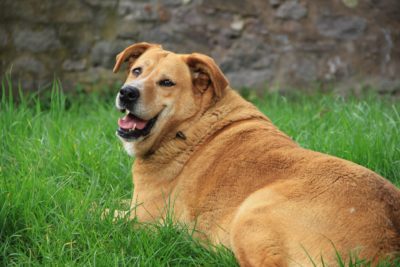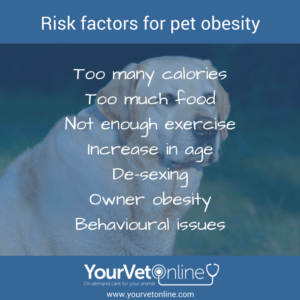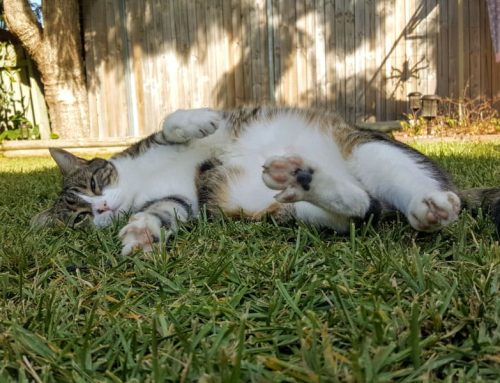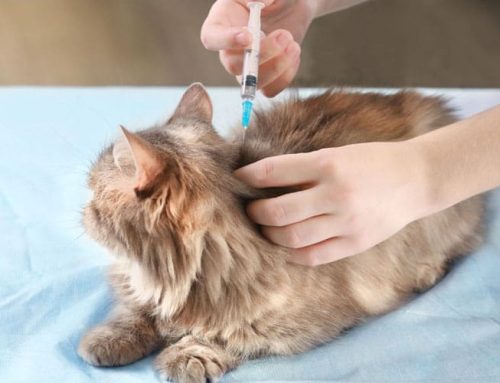Why Pet Obesity Is A Problem For Your Dog & Cat
Our world is in the midst of a pet obesity crisis and we are to blame. According to the Association for Pet Obesity Prevention (APOP), nearly 59 percent of cats and 54 percent of dogs suffer from obesity.
The sad thing about this is that obesity is the greatest risk to our pets’ health and wellbeing that there is.
Luckily for our pets, being overweight is a problem that can be easily remedied.
In this article, we discuss the dangers of letting our dogs and cats become overweight, including the causes of obesity.
Make sure you check out the dog and cat weight charts that are free to download. 
What Is Obesity
Obesity is a nutritional health disease that is defined by excess body fat. Once an animal is over 15% of its optimal body weight, we define that animal as being overweight and up to 20% over as obese.
Causes Of Obesity In Pets
While there are some medical issues that can result in weight gain, these only account for around 5% of all animals who are overweight. The main cause of weight gain in dogs and cats is very simple: we are feeding them food that provides far too many calories for the amount of physical activity they do.
“Oh no, do you mean we have to portion control the food we feed our pets?”
Hehe….yes and no…we will talk a little more about this later.

Risk factors for pets developing weight issues.
Along with too many calories, often the type of food can be an issue too.
There appears to be a correlation between weight gain and inexpensive food and for cats, free-range feeding doesn’t help matters.
Lack of physical exercise is the second major issue we see with many pets.
Not only does exercise help provide mental enrichment it can help maintain and stabilise the weight of your pet.
As animals age, it is natural for them to slow down, and that means for many, they physically can’t do the amount of activity that they once did.
We, therefore, have to adjust what we feed to accommodate this. Research by Allaway et el, (2017) has shown that in cats, early desexing (spey or neuter) can help to modify potential weight gain later in life.
Weight gain after desexing is due to an increase in food intake rather than a decrease in energy expenditure.
We can’t blame hormones for this cause!
Dare I say it but there does seem to be a correlation where owners who are overweight also own pets that are overweight.
Whether this is a function of ‘too much love’, feeding too much or lack of exercise is unknown.
What it does do though, is make it very difficult to have a discussion about weight loss.
Some behaviours that our pets have can also lead to an increase in weight. The meowing by your cat at all hours of the night, only stopping when you feed is one such example.
Why Is Pet Obesity A Problem?
You may think vets are being pedantic, or even rude when we continually bring up your pet’s weight problem. We do this for a very good reason:
Overweight pets do not live as long and are not as healthy as pets of ideal weight.
A lifetime weight study of Labrador Retriever Dogs showed that dogs who were overweight lived two years less than dogs of acceptable weight.
There are many health conditions that are exacerbated by being overweight.
Take a look at this list that shows just how many diseases of cats and dogs are reported to be associated with obesity:
Health Conditions Associated With Obesity
|
A pretty long and exhausting list!
Do you think your pet needs help to lose a few kilograms?
Take a look at this video to assess your pet’s weight.
You can download a body condition score sheet for your cat and dog to assess them at home.
If you are worried, then get in touch…Dr Leigh is taking an 8 week Pet Fit Program to steer your pets into shape!
This program gives you one-on-one personalised advice about nutrition for your pet over the course of 8 weeks.
We want to see your pet living a longer and healthier life.
Cat Body Condition Score Chart Dog Body Condition Score Chart
If you want to learn more about how to help your pet lose weight then watch our tutorial: Top tips to help your dog or cat lose weight
Tell us how you have helped your dog or cat to lose weight in the comments below!




Leave A Comment